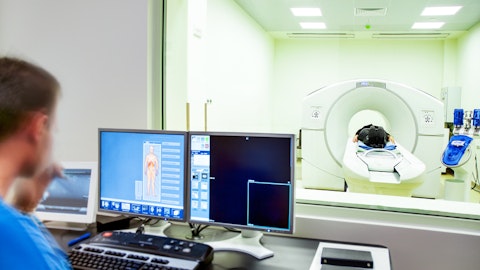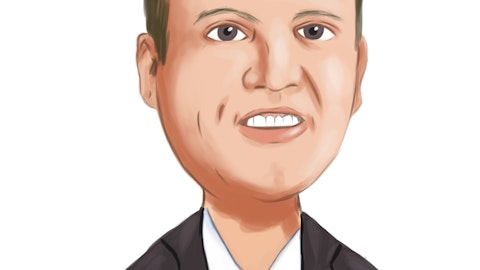It’s also going to give us the ability, we think, to take share in the standard RF market, which is going to be good for us. And then we’ve got some things going on in the business. So internationally, we’ve got a positive reimbursement in Japan. We’ve got NICE in the U.K. coming out for COOLIEF, talking about giving us the ability to expand our reimbursement in Europe. And really from a strategic perspective, being completely different with an approach with the ambulatory surgical center and primarily the orthopedic call point, and we are changing a lot of people out and a lot of distributors. So I think frankly, we’d pretty much be there if we didn’t have some of the — it’s not the whole story, but if we didn’t have the supply chain issues, we’ve been pretty dog-gone close.
And frankly, we’re going to have pretty easy comparables. So — but even beyond that, what we’re pointing to is we feel that we really can get to a sustainable mid-single-digit growth because we’re participating now in the places that we can win. So.
Rick Wise: Yes. Got it. I lied, I’ll ask a half. And the likely or the potential of Diros contribution? And then.
Joe Woody: Yes. So this year, it’s going to be sort of, call it, $6 million in revenue.
Rick Wise: And to $24 million? And how are you thinking about 24’, 25’?
Michael Greiner: It will be double-digit growth, no doubt about. It will be an uplift, but obviously on a lower base. So the impact on the mid-single digit for pain will be somewhat de minimis.
Operator: The next question comes from Matthew Mishan with KeyBanc. Please go ahead.
Matthew Mishan: I just wanted to start off with the new baseline for 2023. The $105 million to $115 million of EPS and the $100 million to $110 million of EBITDA. Those are clean numbers, excluding the divestiture. There’s no necessarily revenue coming out and costs that are kind of stuck in the P&L. Those would be exclusive completely of the divestiture.
Michael Greiner: Well, they are — there are — there is that $30 million of trapped costs that still remain in there that we will be getting at over the next 12 to 18 months. So they’re clean, but there are fixed costs that are trapped stranded, whatever words you guys want to use, post that, and that doesn’t include that. So however, when you get to the 24 and 25 numbers, those include our ability to get those costs out, if that makes sense, Matt.
Matthew Mishan: No, no, it makes complete sense with how you’re looking at it. And then if you think about the progression to 2024, it’s about at the midpoint on the EBITDA of about $25 million of improvement year-over-year. Just can you help us kind of walk us to how you’re getting there. It seems like a lot of that is going to be just from cost reductions that you have an opportunity and have a pretty good handle on.
Michael Greiner: Yes, I think it’s — so two things. Absolutely, a good portion is cost reductions. And then it’s the mid-single-digit growth. combined against a higher gross margin profile, right? So our gross margin profile next year will be going up versus this year meaningfully. Our SG&A as a percentage of revenue will actually be up next year a little bit versus this year, but we’ll be slowly be coming down to our — ultimately, our end targets of 38% to 39% in 2025. So it is a mix of good mid-single-digit growth better mix of product portfolio dropping to the bottom line, plus working on our transformation cost efforts that you just mentioned and also starting to lean in on the additional cost takeout post the divestiture, the full divestiture of RH, right?




